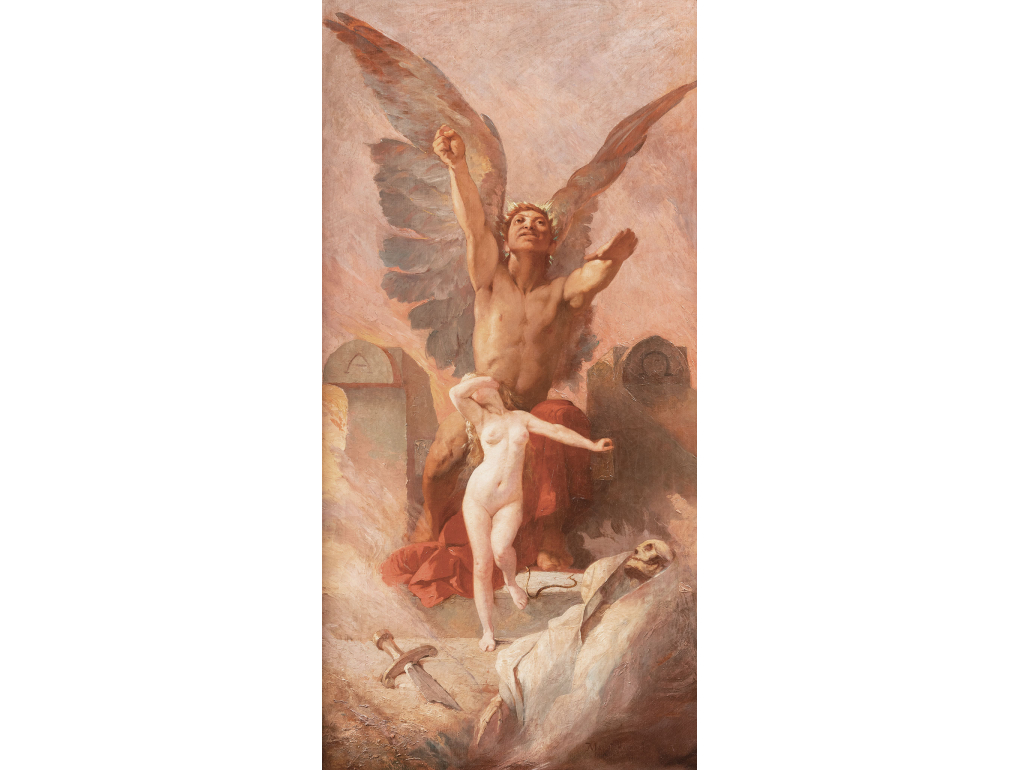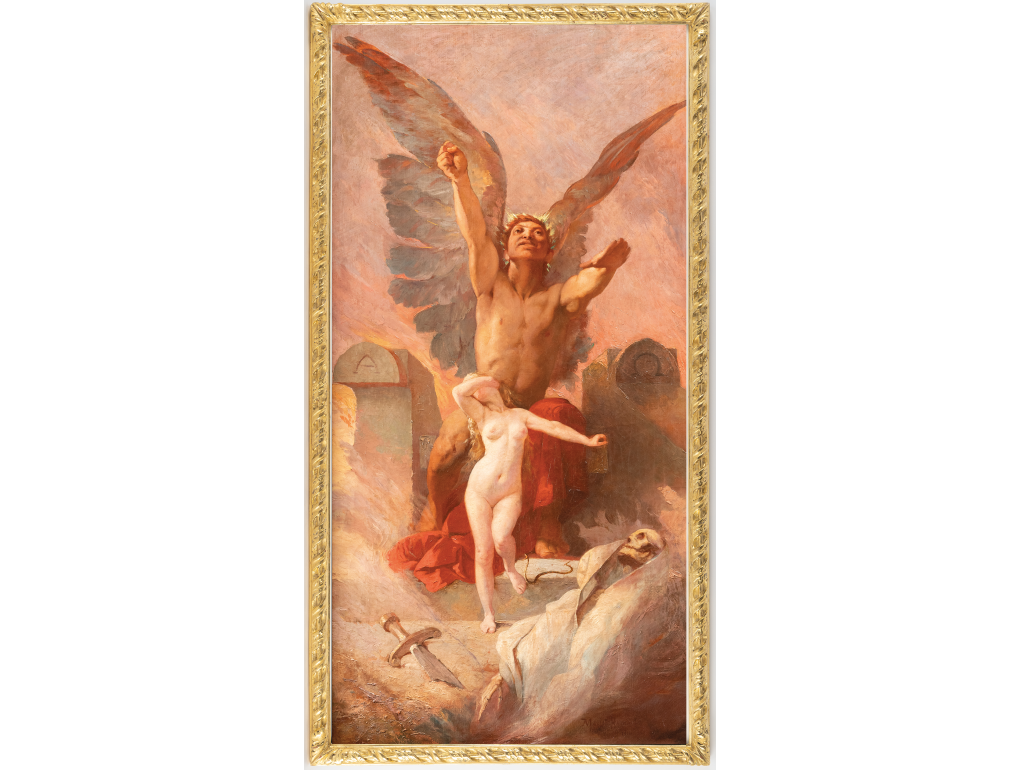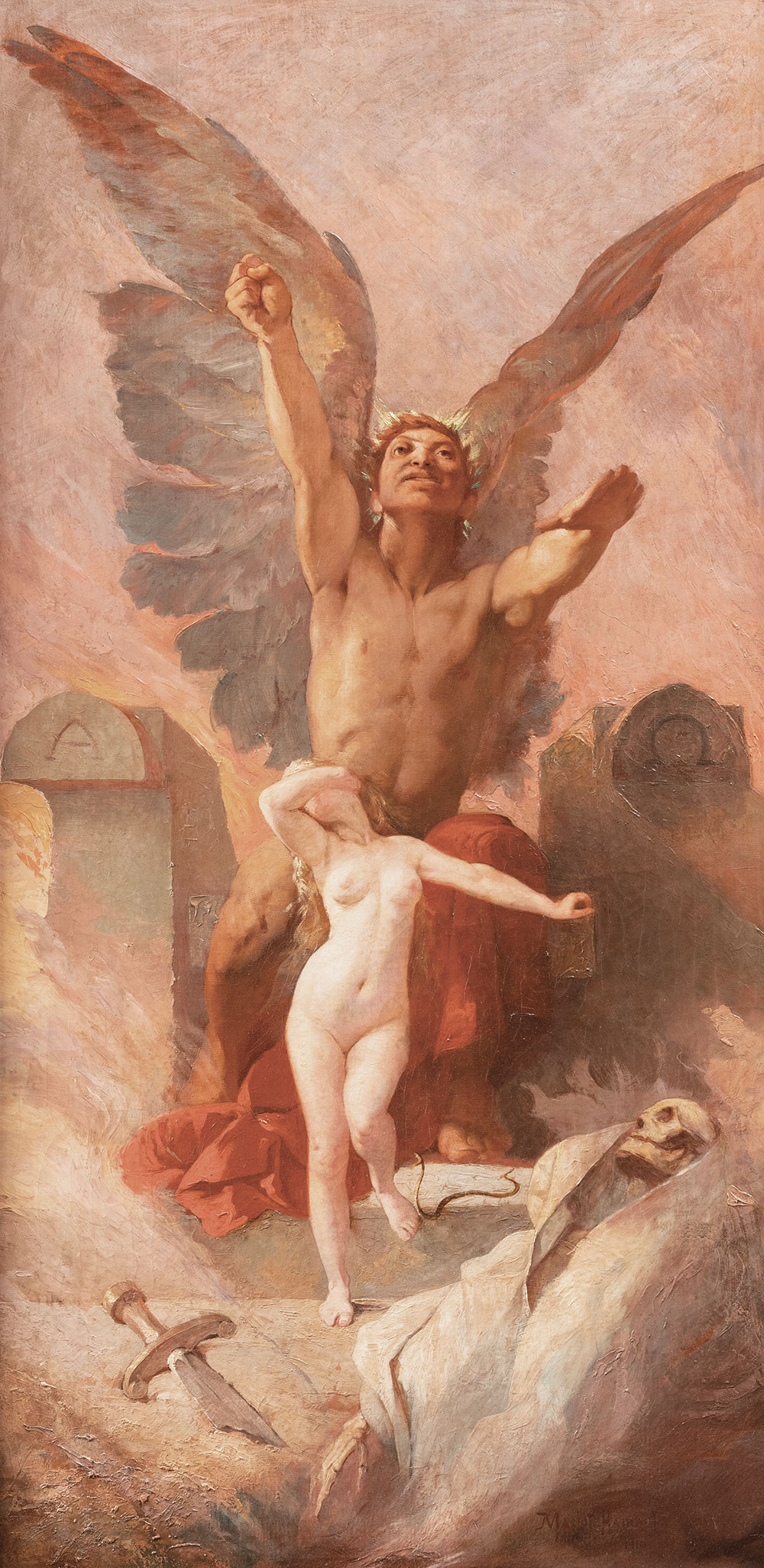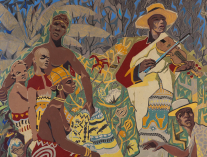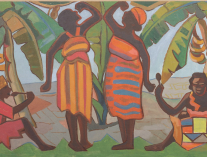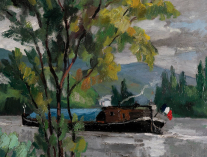Henri Maclot
The Victorious Angel in The Fight Against Lust and Death
Oil on canvas signed and dated Maclot Hamant 1910 lower right
The present painting, dated 1910, borrowed symbols from Mythology and Christian iconography. It represents the struggle between the antagonistic instincts of life drive (Eros) and death drive (Thanatos). In the foreground, a sword with a broken blade and a skeleton in a shroud are symbols of Death. They face a naked young woman accompanied by an undulating snake. The Eve-like figure with snake is a characteristic figure of temptation. At the center, a monumental angel emerges between two columns engraved with Greek letters - alpha and omega - recalling the beginning and the end of all things. He victoriously dominates lust and death.Read more
The strong symbolism of the painting fits particularly well with the aesthetics of turn of the century, oriented towards esotericism and the fascination with the femme fatale. The academic legacy of Alexandre Cabanel is clearly visible, through the subject of the angel and the description of the female nude (recalling l’Ange déchu and La Naissance de Venus, two masterpieces by Cabanel, now at the musée Fabre and at the musée d’Orsay). The chromatic range of red, pink, mauve - reminiscent of the temptations of the flesh - is maint to attract the viewer. The conflict between life and death represented in this painting leads us to think that it was probably exhibited at the 46e exposition de la Société Lorraine des Amis des Arts, held from October 2 to November 13, 1910, in Nancy, under the title: Le Combat / the Fight. The present painting is also a rare testimony of Henri Maclot-Hamant’s personal artistic production still to be rediscovered.
Private collection, France
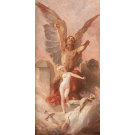
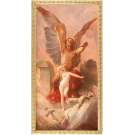
Our artwork available
93400 Saint-Ouen sur Seine
